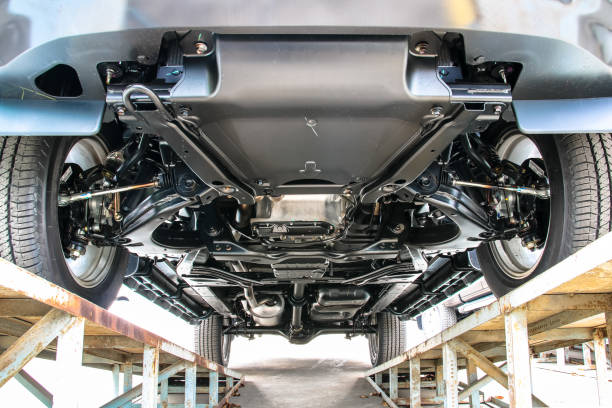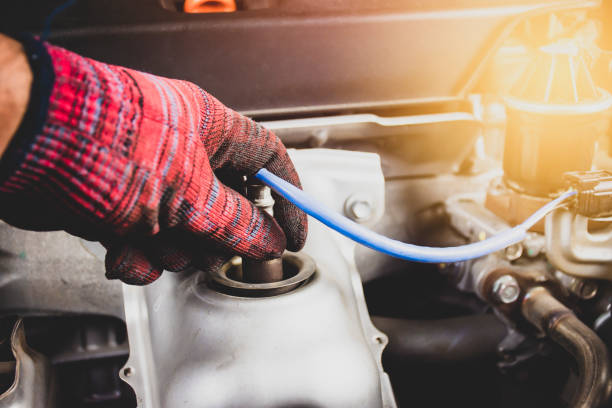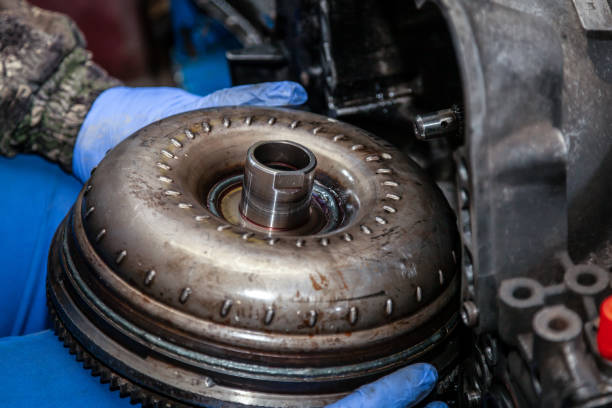Can I Use Regular Water Instead of Engine Coolant in My Car?
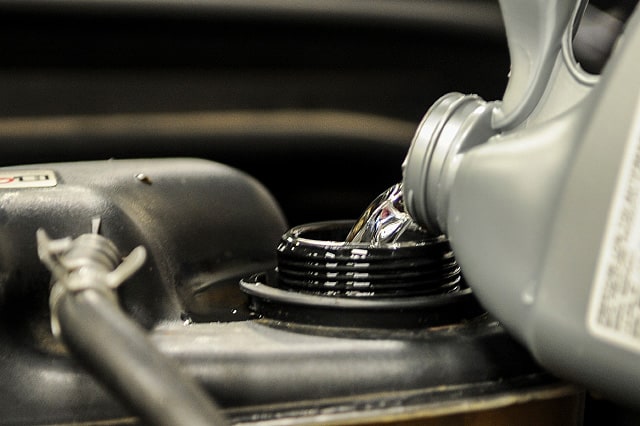
Do you sometimes put water in the coolant tank instead of antifreeze? Well, you’re not alone. A surprisingly high number of people seem to think using pure distilled water in place of coolant if you live in a hot climate is okay. After all, why use anti-freeze if you will never drive your car in conditions below 32°F? Right? WRONG!
You may imagine water to be a cheaper yet equally effective solution to overheating, but this is a common misconception that could blow up in your face, literally! Coolant is essential in your car’s cooling system. Read on to find out why.
What is coolant/antifreeze?
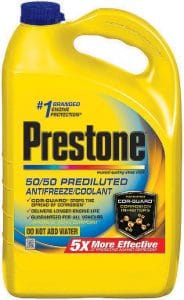
Coolant, otherwise known as antifreeze, is an additive mixed with water at a 50/50 ratio to broaden the range at which water freezes or boils. Water usually freezes at 32 degrees Fahrenheit and boils at 212 degrees Fahrenheit. However, when mixed with an equal part of antifreeze, the freezing point of the resulting solution is lowered to a negative 35 degrees Fahrenheit, while the boiling point gets extended up to 223 degrees Fahrenheit.
The primary ingredients in antifreeze are ethylene glycol (EG) or propylene glycol (PG). These active ingredients are what allow the water/coolant mixture to remain in liquid form under such extreme temperatures. Several additives and inhibitors are also added to prevent corrosion of the engine parts.
Dyes are also added to the coolant to give it a very bright color. The colors may be green, yellow, pink, red, orange, or blue. The color difference helps you to identify the type of antifreeze most suitable for the condition of your car’s cooling system. If changing the coolant yourself, make sure to consult a dealer or read the owner’s manual.
Tip: Knowing the color of your coolant can also help you identify a leak by examining the color of the fluid on the ground under your car. Oil is black, windshield washer fluid is blue, coolant is brightly colored, and brake fluid is typically greasy and clear.
Antifreeze poisoning
Antifreeze made from ethylene glycol is toxic to humans, pets, and wild animals when ingested even in relatively small doses. Ethylene glycol is an odorless, colorless, sweet-tasting, viscous liquid of which:
- Two ounces can kill a dog.
- One teaspoon can be lethal to a cat.
- Two tablespoons can be hazardous to children.
When swallowed, the compound turns into acid, which builds up and forms calcium oxalate crystals in the kidneys, damaging them. The kidney damage, in turn, leads to acute kidney failure.
If you have young kids and pets in the household and would very much prefer to play it safe, go for coolant made from propylene glycol. This type of antifreeze is only toxic when ingested in large quantities.
How Does Coolant Work
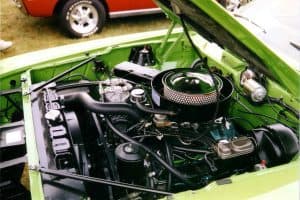
When driving, your car’s engine produces a lot of heat and must be cooled continuously to avoid engine damage or worse, total engine failure. Your car’s cooling system works by directing the flow of coolant through passages in the engine block and cylinder heads. As the coolant passes through these channels, it absorbs heat from the engine.
The heated fluid then makes its way to the radiator in the front of the car through a rubber hose. It then flows through the thin tubes in the radiator, where it is cooled off by the air stream entering the engine bay from the environment through the grill in front of the car. There is also a radiator fan that blows directly on the radiator to cool it down. The now cooled fluid then circulates back to the engine to absorb more heat. The water pump is responsible for circulating the coolant through the cooling system.
Tip: if your car is overheating, the culprit can be a water pump failure. It can also be leaking hoses or a stuck thermostat.
The Importance of Coolant
The heat produced by regular internal combustion can build up a bit fast leading to extreme temperatures, which can cause the head gasket to blow, the cylinder head to warp, or severe engine damage. If you use water, the high temperatures inside the motor would eventually boil it and evaporate, leaving the car void of a coolant.
Similarly, in extreme cold weather conditions, you run the risk of the water freezing in the engine. Frozen water in your car’s cooling system can result in damages such as cracks in the radiator or the heater core, warped cylinder head, and a cracked engine block.
You should, therefore, always go with coolant since it stays in a liquid state regardless of the broad temperature range. Coolant helps keep your car’s engine running smoothly for a long time. As is required of other car fluids, your vehicle’s coolant should be regularly checked to ensure there is enough, and there are no leaks.
Additionally, the metals used in cooling systems differ from manufacturer to manufacturer. Every manufacturer has formulated a coolant that will best work with their system based on the specific materials used in the manufacture of their gasket and engine components. Research teams develop a liquid that doesn’t eat away at the elements in their alloys and performs optimally in their pressurized system.
You should, therefore, take the time to find out which coolant is suitable for your car and how it should be applied. Using the wrong engine coolant can gradually lead to corrosion and damage to the water pump, radiator, radiator hoses, and cylinder gasket.
Note: Although some coolants are advertised to be suitable for all cars, it’s always best to confirm with your automobile’s manufacturer.
It is also worth mentioning that when mixing the coolant with equal parts of water, use pure, distilled water. Regular water consists of minerals that tend to build up inside the radiator and cooling system passages of your engine, which prevents proper coolant flow.
How to Fill Up the Radiator
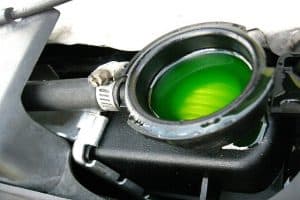
Photo : Flickr
Most modern vehicles have a sealed cooling system and do not require any topping off (filling up) unless there is a leak. However, you should regularly check your vehicle’s coolant level to ensure adequate radiator fluid level is maintained.
How to check your radiator fluid
Follow these steps to check your coolant. You will also need gloves and a towel or rag.
Warning: NEVER open a radiator cap if the temperature of the cap is too hot to touch. This indicates heat has built up inside the radiator. The heat will lead to a pressure build-up. Taking a cap off when hot will release this pressure inside the radiator and cause the hot liquid to spray all over you, causing injury. There are a lot of videos on YouTube showing people who have made this mistake and the bad injuries it causes.
- Ensure the engine cools. Put the car in park, turn off the engine, and let the car sit until the radiator cools. Feel the hood to confirm if the car has cooled.
- Open the hood and locate the coolant reservoir cap. Most newer car models have labeled radiator caps. Alternatively, you can check your owner’s manual for its exact location.
- Remove the radiator cap. Place a towel or thick rag on it before opening it, as the radiator cap will be under pressure. Do not open it if it is hot since a car’s cooling system is pressurized, and pressurized gas can cause severe burns.
- Check the fluid level inside the radiator. The radiator overflow tank is usually see-through, so you can check the coolant level by reading the markings on the side of the tank.
How to add more radiator fluid
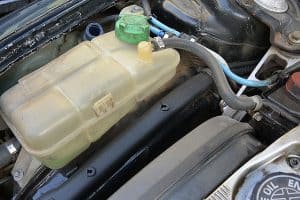
If you need to add coolant, here’s how to do it. You will need coolant, distilled water, a funnel, and gloves. No distilled water is needed if you buy a premixed coolant.
Note: Refer to your car’s owner’s manual to see the coolant specifications for your vehicle.
- Locate the expansion tank. The expansion/overflow tank is a small reservoir on the side of the radiator that collects any fluid that slips out when the system overflows. As the coolant heats up, it expands. For this reason, you shouldn’t fill up the overflow tank all the way.
Note: If the coolant level in the radiator is low, but the reservoir is full, you might have a bad radiator cap and overflow system problem. Have a mechanic check the system as soon as possible.
- Mix coolant with distilled water. Mix the two in a 50/50 ratio by filling an empty radiator fluid bottle halfway with water and topping it up with radiator fluid. A mixture containing up to 70% coolant will still work, but a fifty-fifty mix is more efficient.
- Pour the radiator fluid mixture into the overflow tank. If your car doesn’t have an overflow tank or if the tank doesn’t empty back into the cooling system, pour the diluted coolant into the radiator, making sure it doesn’t pass the “full” mark. Ensure to put the radiator cap back on before starting the engine.
- Start the engine. Listen for any unusual sounds and check that the temperature sensor and engine cooling fan are working well. If you hear clunking or humming noises, the cooling fan may be having difficulties functioning, which could also cause insufficient engine cooling.
- Look for any leaks. Inspect the radiator hoses for any holes, which may be more apparent with the new coolant flowing in the cooling system. If you notice that you are quickly losing coolant even after adding fluid, there may be an internal leak. In which case, you should take the car to a certified mechanic for a thorough inspection.
How to Safely Dispose of Coolant
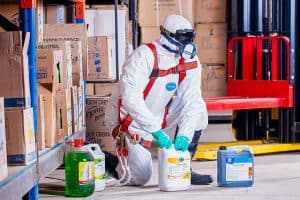
As mentioned earlier, ethylene glycol and propylene glycol, the primary ingredients of coolant/antifreeze, can be toxic to both humans and animals. Many states have, therefore, outlined specific procedures for disposing of old or used gas and antifreeze. Keep these rules in mind to be on the safe end:
Do not dump your waste antifreeze down the drain
Animals may still have access to where the fluid flows through a storm sewer and drink it since it smells and tastes sweet. The coolant also should not be poured in a septic system.
Do not pour antifreeze on the ground
If you dump your antifreeze on the ground, it may seep into groundwater and contaminate it. In case you spill some outside, follow these steps:
- Wear protective gloves and put on a mask to prevent breathing in the smell.
- Cover the spill with an absorbent material like sand, baking soda, or kitty litter.
- Cover the material using paper towels and allow it to rest for no more than three hours.
- Wipe up the material and paper towels with dry paper towels and throw them in the garbage. Make sure to seal the trash bag and wash your hands thoroughly.
- Clean the area with soap and water and flush any remaining stains away with more water.
- As much as possible, let the wet area air dry. Alternatively, layer it with newspaper sheets or paper towels.
Take your expired or contaminated antifreeze to a recycling center, gas station, or automotive shop
Some service shops accept, treat, dispose of, or recycle antifreeze, motor oil, transmission fluid, et cetera. Once you find a dumping location, follow these recommendations:
- Separate the tainted and old antifreeze and store them separately as they require different disposal treatments. Contaminated antifreeze may contain heavy metal and is considered hazardous waste, so only facilities that offer such services will take it.
- Drive the antifreeze to the appropriate disposal facility or hire a commercial waste hauler to transport it to the facility.
- For the old but unused coolant, some locations have coolant recycling machines that remove glycol from the old coolant with an additive, making it reusable. However, the process requires the antifreeze to be free of contaminants like oil, or else it will not work.
Conclusion
Yes, you could use water as a coolant in an emergency. However, doing so is not recommended since water won’t work well beyond its freezing and boiling points. This could also cause expensive engine damage. So, use it only in unavoidable situations. Remember also to regularly check the coolant level and cooling fan to avoid future problems with your cooling system.
Tip: Do not only rely on your dashboard temperature light as it can fail.
If you liked this article make sure to check out: Car Battery Replacement Cost and How Much Does Maaco Charge to Paint a Car





